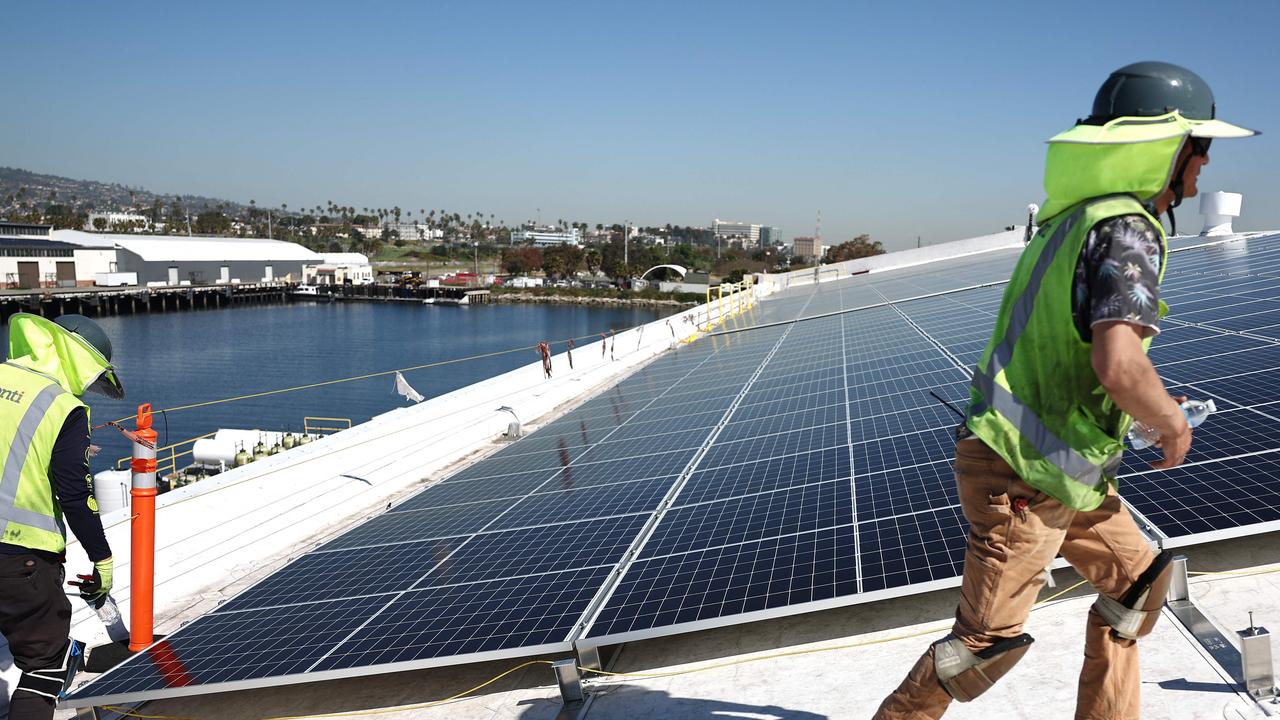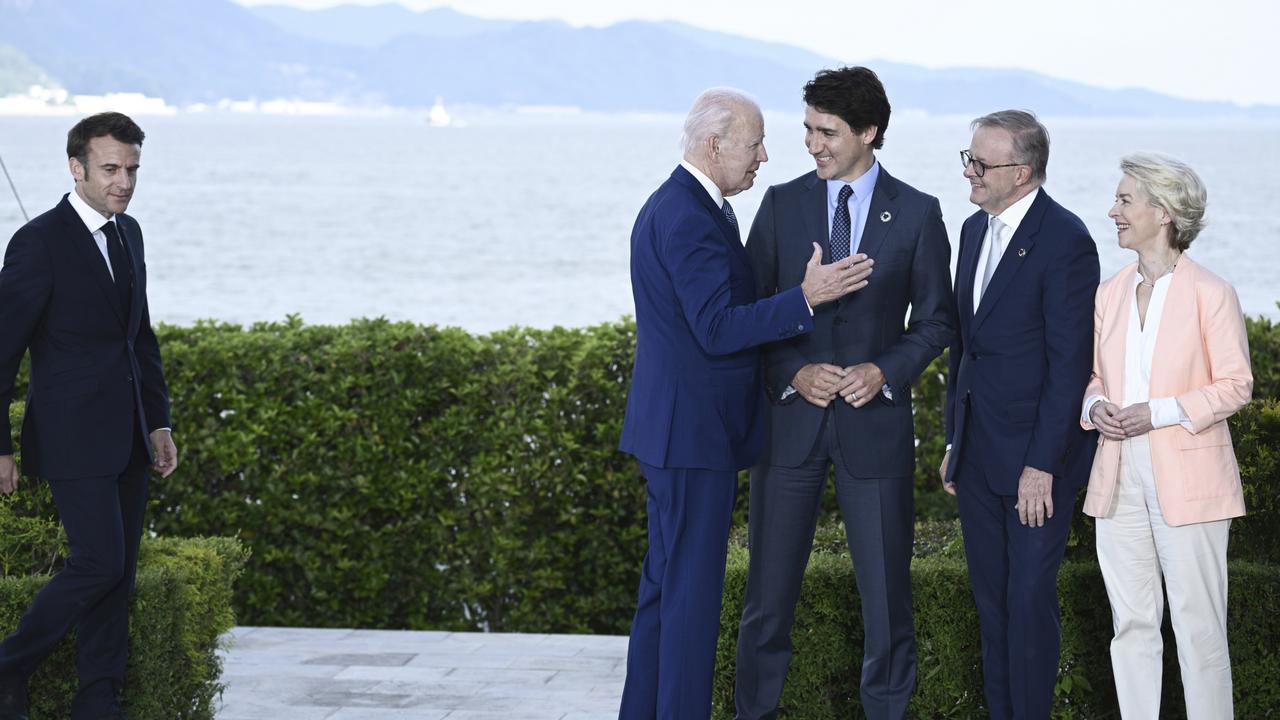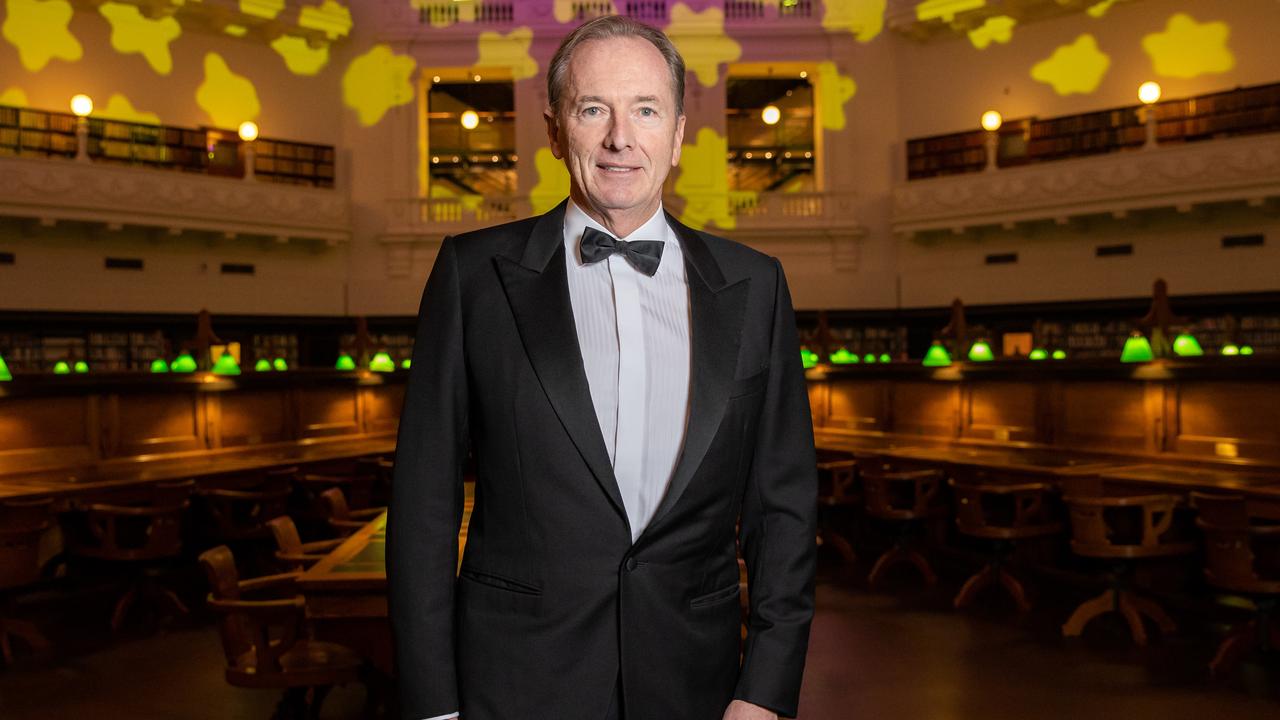PM Anthony Albanese still needs to build on US president Joe Biden’s big IRA deal
Biden’s IRA deal is a significant win for Australia. It ends the risk of capital flight and with it jobs and technology going to the US.
Business
Don't miss out on the headlines from Business. Followed categories will be added to My News.
As Australia secures a landmark deal to join US President Joe Biden’s massive green subsidy net, Anthony Albanese’s government can’t rest there.
Much work still needs to be done across developing secure cheap energy; taxing certainty; industrial relations; and reducing the temptation of government intervention to show that Australia is serious about the fight for global investment dollars.
On the sidelines of the G7 meeting in Hiroshima, Prime Minister Anthony Albanese and Biden signed an agreement where the US President will seek to steer through Congress a bid for Australian producers to be treated as US domestic producers under the Inflation Reduction Act that offers colossal handouts for clean energy developers.
For Australia the significance of the deal can’t be understated. It will substantially rebalance the playing field and lower the risk of capital flight into the US.

Once the finer details have been ironed out, it could stand to offer either direct subsidies or US tax credits for businesses here looking to process critical minerals, research or build a green manufacturing facility.
However Australia can’t simply let the US do all the heavy lifting. The states and federal government too need to get firmly behind business to capitalise what now stands to be a major opportunity. All major nations are furiously competing for green capital and Australia has just been pushed back to the middle of the pack.
In the signing of the deal there is some recognition by Washington that the program that has sparked an investment arms race could end up doing more economic harm than good to the strategic allies it relies on.
With hundreds of billions in US subsidies on offer the scale of the program had been starting to distort markets and suck investment away from the very producers like Australia best placed to process raw materials from lithium to copper or rare earths.

However, Australia always risked being squeezed out to the financial arms race underway between Europe, US and even China about moving up the value chain for processing and manufacturing materials used in everything from iPhones to jet fighters.
Indeed, Biden has framed the IRA deal as critical for defence. At the heart of a scramble to develop critical minerals is an effort to diversify the supply chain away from China.
China produces the bulk of the world’s separated rare earths and more than 70 per cent of Australia’s lithium sales head to China. It dominates the manufacturing of solar cells, rechargeable batteries and also motors, and players like the US have been worried about the concentration.
Speaking in Hiroshima over the weekend Biden said climate and clean energy was the “third pillar” of the Australia-US Alliance. The agreement “can enable the expansion and diversification of clean energy supply chains, especially as it relates to critical materials,” he said in a joint briefing with Albanese.
Billions at stake
Even since Biden secured support for his $US369bn ($555bn) IRA bill some 18 months ago to secure his local manufacturing base, top Australian executives have voiced concern that Australia was slipping further behind when it comes to attracting new investment, industries and even jobs.
There are estimates the US program could ultimately come in much higher while spurring on private sector investment. In total it is expected the IRA could generate as much as $US1.7 trillion of private and public investments in the US green economy over the coming decade. Some of these funds would have been directly diverted away from here or spent by Australian companies in the US.
A string of Australian businesses from BHP, Fortescue, Rio Tinto, battery maker Redflow, Woodside as well as several lithium producers including MinRes had been eyeing projects or opportunities in the US given the generous subsidies on offer.
Many had been privately concerned that the Albanese government was dragging its feet over a coherent response to the IRA – or simply had no answer. Apart from Western Australia the states too are regarded as being suspicious towards development of mining and processing capability.

All this means that Australia risks losing out of the more valuable parts processing and development of minerals, despite sitting on substantial natural resources.
In a pre-Budget submission, BHP said Australia “needs to ensure it is globally competitive” if it wants to attract global capital and become a leader in the race for critical minerals.
“Australia is the dominant global player in the mining of battery materials but plays a relatively narrow role focused on mining and distribution of raw materials. The economic case for moving up the value chain is strong,” BHP said.
This month Macquarie chief executive Shemara Wikramanayake pointed out the IRA was changing the dynamics of green energy funding which means projects in the US would be able to “crack the code” for a number of decarbonisation projects from carbon capture to long-term storage solutions.
Indeed Mark Hutchinson, the boss of Fortescue’s green energy arm, said the IRA legislation had meant that the US was a more attractive market to invest in.
The incentives meant Fortescue Future Industries had already proposed three US-based green hydrogen projects that were ready for the investment stage.
IRA response
The European Union and several other have already responded to the IRA bill with their own subsidies or strategies in attempt to protect their own renewables manufacturing base. All this has threatened to further diminish Australia’s position in the supply chain.
Australia’s first formal response to the IRA program was the $2bn Hydrogen Headstart program unveiled during this month’s budget. While a drop in the ocean against the US funds, the direct investments on offer were aimed at developing a gigawatt of electrolyser capacity by 2030, a key step in developing green hydrogen. The Albanese government is due to release its own critical minerals strategy later this year.
Australia too should be thanking Canada for doing much of the initial ground work in getting access to the US IRA funds.
Canada faced the implosion of its sizeable car manufacturing base with the big US producers set to spend billions of dollars moving to electrification. Some furious lobbying by Canada’s Trudeau government allowed processing of critical minerals and batteries used in car manufacturing north of the border to claim IRA tax credits.
Canada hasn’t stopped there, it has since outlined a critical minerals strategy, introduced a direct carbon market signal, and actively sought players like BHP and Rio Tinto to upgrade their investments there.
Gorman exit
Morgan Stanley boss James Gorman was briefly back in his hometown of Melbourne last month where he gave the Keith Murdoch oration at the State Library of Victoria.
In the speech Gorman said he arrived in New York with a bank loan to study business at Columbia University. And with a nod to Sinatra he figured to make it in New York he needed a good job and a smart tuxedo. “So I went for both,” he said.
The 64-year-old Gorman over the weekend said he would step down next year as chief executive of Morgan Stanley, one of big four US banks. He is one of the longest serving executives on Wall Street, has sat on the advisory board of the US Federal Reserve and is on the board of the New York Federal Reserve.

He ranks as one of the most powerful finance executives in the world today, launched from a middle class upbringing in Melbourne’s suburbs.
The two ends of Gorman’s executive career have been marked by a banking crisis. When he took over the bank 13 years ago Morgan Stanley was still reeling from deep losses from the global financial crisis. He spent much of his early years slowly but steadily reshaping the $US140bn bank to become safer and deliver more predictable earnings.
And last month Gorman was speaking as the US regional banking crisis was burning hot. Silicon Valley Bank had collapsed just weeks earlier, Credit Suisse had gone and others were on edge. Gorman almost didn’t fly out to Australia from New York on fears the global banking system was again nearing breaking point.
During the speech Gorman laid out a plan to minimise bank losses, including changes in his own organisation.
His mantra is: “No client, no trade, can cost us more than 0.5 per cent of capital.” That followed a single trade during the GFC that cost Morgan Stanley nearly $US10bn. He welcomed more regulatory scrutiny, changing of executive pay rules for more bonus at risk and spread over years. Acquisitions too should be handled with extreme caution and boards needed to put more heat on CEOs.
He said bank CEOs can do more damage to their company than pretty much any other industry.
“The board has two jobs: Managing the CEO and overseeing everything else. The first is much, much more important than everything else,” Gorman said at the time.
Gorman’s retirement was announced at Morgan Stanley’s annual meeting. The bank expects to name a new CEO within the next 12 months, with most anticipating the role to go to one of four internal candidates.
johnstone@theaustralian.com.au
More Coverage
Originally published as PM Anthony Albanese still needs to build on US president Joe Biden’s big IRA deal









